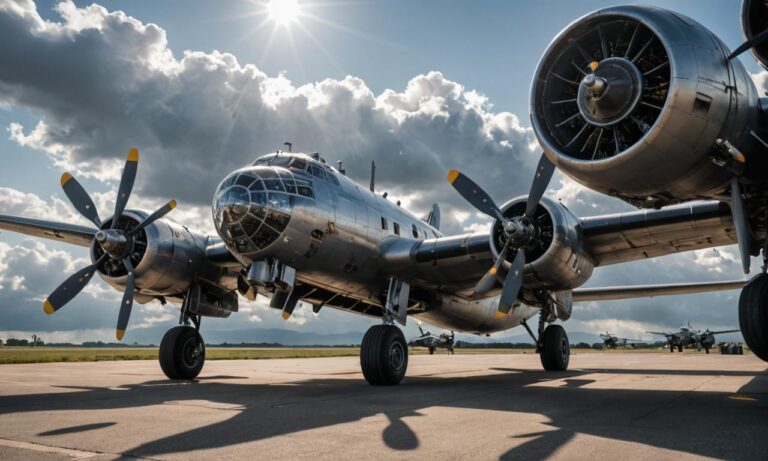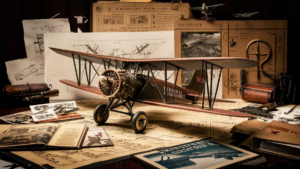The Boeing B-29 Superfortress is a historic and iconic aircraft that played a significant role during World War II and beyond. It was a pivotal weapon in the Allied arsenal, known for its long-range capabilities, high altitude performance, and devastating bombing raids.
The Birth of a Legend
The development of the B-29 Superfortress began in the 1930s when the United States Army Air Corps issued a requirement for a strategic bomber capable of delivering large bomb loads over extended distances. Boeing won the contract with its innovative design, which incorporated advanced features such as pressurized crew compartments, remote-controlled gun turrets, and a cutting-edge bomb sight.
Technological Marvel
The B-29 Superfortress was a technological marvel of its time. It featured a sleek, streamlined fuselage and four powerful Wright R-3350 engines, which propelled the aircraft to speeds exceeding 350 mph. Its pressurized cabin allowed for high-altitude flight, giving it a strategic advantage over enemy defenses.
Warrior in Action
During World War II, the B-29 Superfortress played a crucial role in the Pacific theater, conducting strategic bombing campaigns against Japanese targets. Its ability to carry heavy bomb loads and operate at high altitudes made it instrumental in crippling enemy infrastructure and demoralizing the Japanese war effort.
The Enola Gay
One of the most famous missions undertaken by the B-29 Superfortress was the bombing of Hiroshima and Nagasaki. On August 6, 1945, the B-29 named “Enola Gay” dropped the world’s first atomic bomb over Hiroshima, hastening the end of World War II and ushering in the atomic age.
Postwar Legacy
After the war, the B-29 Superfortress continued to serve in various roles, including reconnaissance, weather monitoring, and aerial refueling. It also played a significant role in the Korean War, providing vital support to ground forces and conducting strategic bombing missions against North Korean targets.
Museum Pieces
Today, several B-29 Superfortresses have been preserved and restored to their former glory, serving as living reminders of their storied past. These aircraft can be found in museums across the United States, allowing visitors to experience firsthand the marvels of aviation history.
The Boeing B-29 Superfortress stands as a testament to the ingenuity and bravery of those who designed, built, and flew it. From its inception to its role in shaping history, this legendary aircraft continues to captivate and inspire aviation enthusiasts around the world.
Technical Specifications
Let’s delve into the technical specifications of the Boeing B-29 Superfortress. This table provides an overview of its key features:
| Parameter | Details |
|---|---|
| Length | 99 ft 0 in (30.2 m) |
| Wingspan | 141 ft 3 in (43.1 m) |
| Height | 27 ft 9 in (8.5 m) |
| Empty Weight | 74,500 lb (33,800 kg) |
| Max Takeoff Weight | 141,100 lb (64,000 kg) |
| Powerplant | Four Wright R-3350-23 Duplex Cyclone radial engines, 2,200 hp (1,640 kW) each |
| Maximum Speed | 357 mph (575 km/h) |
| Range | 3,250 mi (5,230 km) |
| Service Ceiling | 31,850 ft (9,710 m) |
Performance
The B-29 Superfortress boasted impressive performance metrics for its time, with a formidable range, high altitude capabilities, and substantial bomb load capacity. Its ability to fly at altitudes beyond the reach of most enemy defenses made it a formidable adversary.
Surviving Examples
Despite being retired from active service, some B-29 Superfortresses have been meticulously preserved and are still operational today. These living relics provide a unique opportunity for aviation enthusiasts to witness firsthand the power and grandeur of this historic aircraft.
See also:






